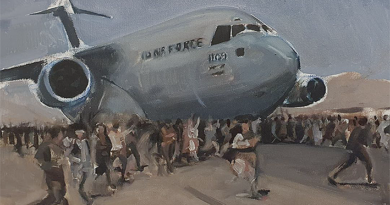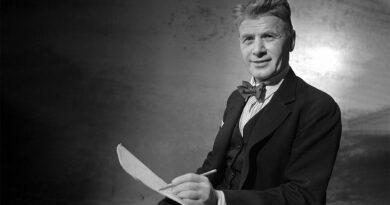self-portrait: opening the door to dematerialised narcissism
GÜLAY YAŞAYANLAR
Self-portrait is an order of representation in which the seemingly reasonable flow of intensified emotions that need to be dealt with is provoked by internal questioning. The ability to synthesize and break down surfaced emotions while embodying the character presents an alluring, almost anti-oedipal complexity. Therefore, here, the artist, who presents himself with an unadulterated relationality, exaggeratedly and obsessively includes his own sediment accumulated in ambiguous areas, aspects of his physical structure, in this delirium. In this challenging process of introspection, it’s crucial to clarify ambiguities through negotiation, imbuing the self-portrait with a more authentic and radical unconscious. In this way, a new rhetoric emerges that creates interesting distances by including differences in the determined character image. Thus, the self-portrait becomes one of the effective indicators of neo-modern dynamics, which are spiritually and culturally permeable, but also prone to solidification. It is possible to say that a sentimentality that cannot be included in the self-portrait, that is excluded or left undefined, creates a fragile balance here.
Self-portrait is an area of representation where the artist defines his character with an in-depth look. This experience reveals all the struggles of a restless self in an exceptional state of mind, on the way to reaching a subjective narrative. Within this complex network of relationships, the artist surrenders to a self-exploration from a narrative distance. Or; it is like the declaration of a secret life that reaches to the main texture by describing some eroded places.
an internal organisation without witnesses
On the other hand, the self-portrait is a product of the defeatist oppositional attitude that brings a complex structure into existence by activating the power of affect. It’s a self-reflection that projects one’s character and status, based on established timelines, displayed outwardly but organized internally without observers. On a constantly revised plane, a personal narrative reconstructs itself in a complicated way with emotions that reverse natural processes. Therefore, the issue of self-portraiture, which can present the psychology of passion, determine the emotional burden, and moreover open the door to a dematerialised narcissism, is in itself an unsettling visual situation. Furthermore, it represents a challenging process that reveals itself persistently, even as it attempts to partially exclude elements that define the self.
In other words, a self-portrait is an act of reminder that reveals the character and emotions and distinguishes the codes of psychological representation. Here, the artist, who comes face to face with himself/herself, seems to make a breakdown of all the deep ruptures, basic motivational antipathies and/or metaphorically the way of comprehending life that haunt the image, or to emphasise the hoarded emotional states. With this action, the artist reveals his own individuality, while at the same time reflecting the process of dissolution/fragmentation he is going through into a collective aura. He wants to reach a dimension that makes the portrait more realistic and conceptualised by bringing narrative emphases to the fore through psychological justifications.
an order of representation provoked by internal questioning
In this context, self-portrait is an order of representation in which the seemingly reasonable flow of intensified emotions that need to be dealt with is provoked by internal questioning. The ability to synthesize and break down surfaced emotions while embodying the character presents an alluring, almost anti-oedipal complexity. Therefore, here, the artist, who presents himself with an unadulterated relationality, exaggeratedly and obsessively includes his own sediment accumulated in ambiguous areas, aspects of his physical structure, in this delirium. In this challenging process of introspection, it’s crucial to clarify ambiguities through negotiation, imbuing the self-portrait with a more authentic and radical unconscious. In this way, a new rhetoric emerges that creates interesting distances by including differences in the determined character image. Thus, the self-portrait becomes one of the effective indicators of neo-modern dynamics, which are spiritually and culturally permeable, but also prone to solidification. It is possible to say that a sentimentality that cannot be included in the self-portrait, that is excluded or left undefined, creates a fragile balance here.
Therefore, in the practice of self-portraiture, in accordance with narrative paradigms such as class emphasis, glorification, transcendence or implosion, which create privilege, an unorthodox transmission is in effect. Self-portraiture becomes unique here through the creation of a new spiritual landscape, one that endures constant temperamental shifts and breaks free from conventional forms. And it is obvious that all kinds of structural distortions that transform the self-portrait – together with the threatening desires felt – attempt a distant approximation to this anticipated and expected psychic transfer and cause different satisfactions.
a map of desire laden with minor discoveries
Ultimately, we can view the self-portrait as an anarchist act – one that conveys complex psychology and is shaped by bold interventions in depicting the self as other. In this thick fictional field that digs into the remains at the bottom and reveals a heterotopia of emotions, the capricious and docile deposits offered by a desire map laden with minor discoveries and a temperament that is scattered in the aura with the tempting energy of sinfulness should be seen as the result of an intellectual domination. New approaches to self-portraiture are paradoxical in this context, because they take place in a precarious negotiation space. Moreover, it is shaped under the constant pressure of a subversive and critical gaze, loaded with statements related to identity, body and sexuality, politics, social and cultural structure. Precisely for this reason, it is a creative intuitive awakening that can differentiate, interpret and, when necessary, change phenomena on the level of individuality. Or it is a powerful rhetoric of defence that creates balance in the relationship between life and art.
Gülay Yaşayanlar, Copyright © 2024 / All Rights Reserved.




